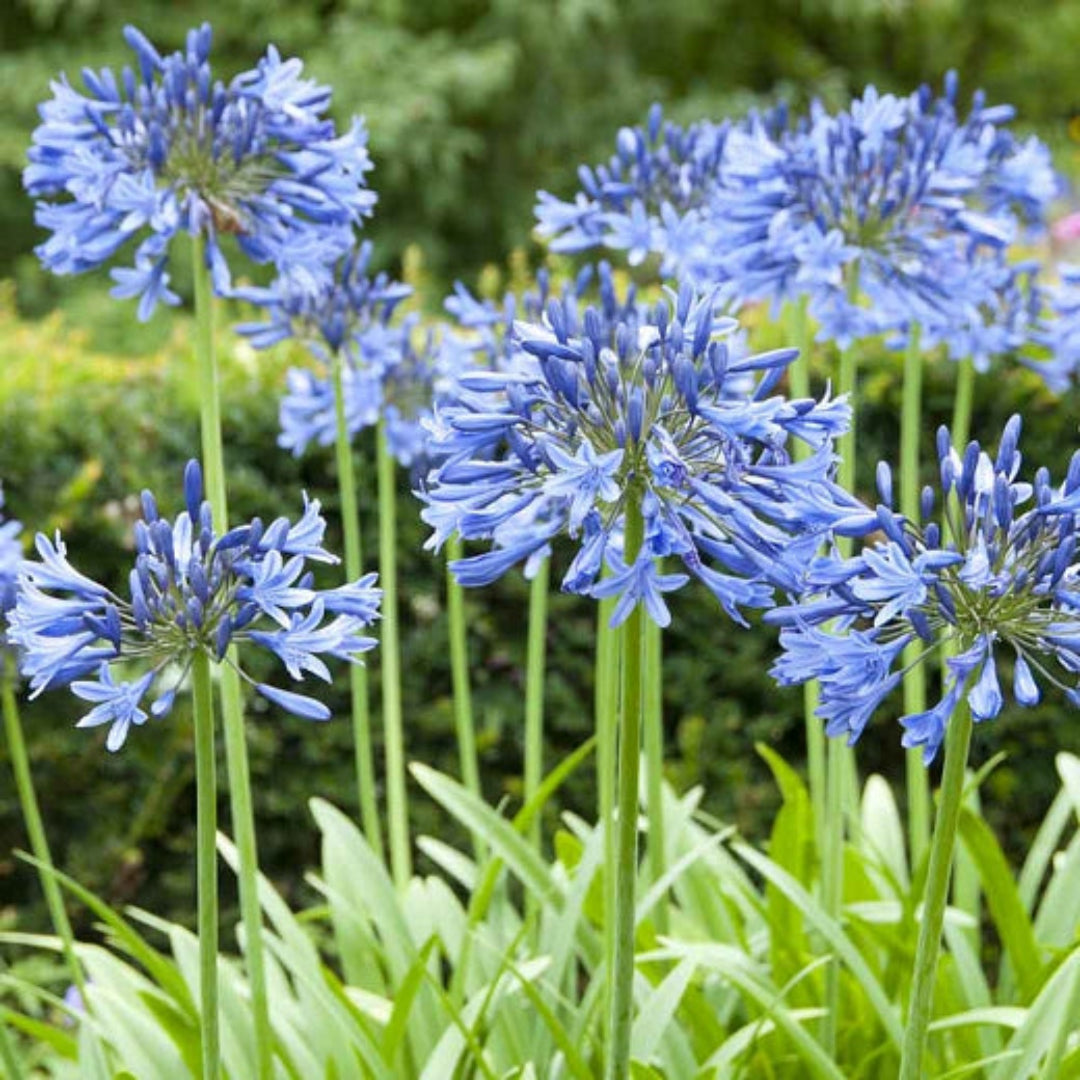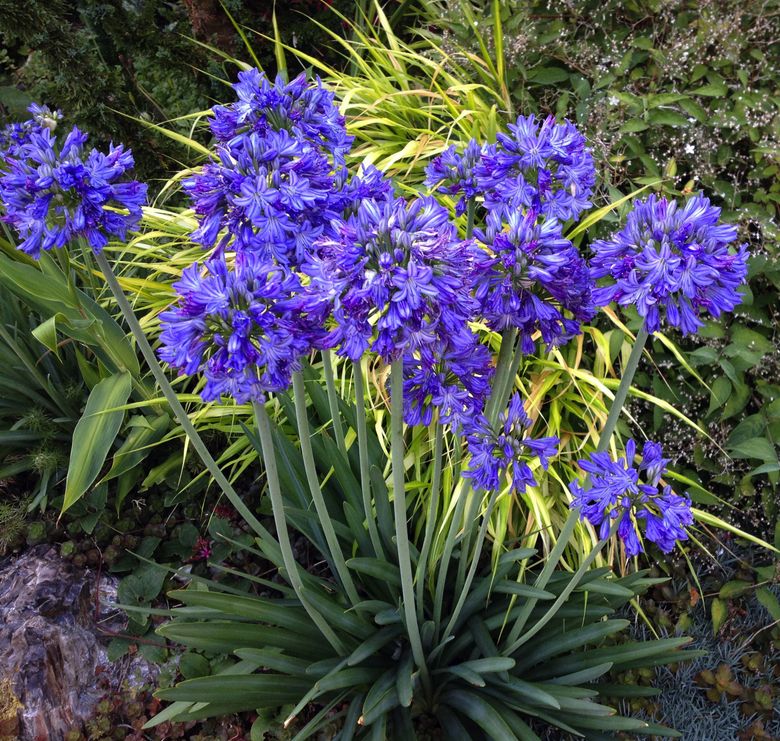Letting Loose the Secret to Successful Agapanthus Cultivation: Advice for a Flourishing Yard
In the realm of gardening, cultivating agapanthus effectively requires a critical method that includes numerous aspects of plant treatment. With mindful focus to information, one can open the tricks to nurturing these magnificent blossoms, bring about a yard that prospers with elegance and vibrancy. By recognizing the subtleties of agapanthus growing, one can produce an atmosphere where these plants prosper and flower abundantly. In the adhering to discussion, we will certainly explore essential tips and tricks that will lead you in the direction of a prospering agapanthus garden, offering insights right into finest techniques, dirt conditions, watering strategies, and a lot more.
Growing Agapanthus: Ideal Practices
When growing Agapanthus, proper soil preparation is vital for guaranteeing effective development and advancement of these gorgeous blossoms. Agapanthus, frequently referred to as Lily of the Nile or African lily, thrives in well-draining dirt with a slightly acidic to neutral pH level - Agapanthus. Prior to growing, it is essential to change hefty clay dirts with raw material such as compost or peat moss to improve drainage and give important nutrients for the plants
To grow Agapanthus, pick an area that gets complete sunshine to partial color, as this will certainly promote healthy and balanced development and bountiful flowering. Dig an opening two times the diameter of the plant's root round and place the Agapanthus at the exact same deepness it was previously growing. Carefully backfill the hole with soil, pushing down securely to eliminate any air pockets around the roots.
Water the recently grown Agapanthus thoroughly and remain to maintain the dirt equally damp, specifically throughout the plant's energetic expanding period. Agapanthus. Applying a balanced fertilizer once a month can better support the plant's development and blooming. By adhering to these best practices for planting Agapanthus, you can develop a stunning display screen of these exciting flowers in your garden
Suitable Dirt Conditions for Agapanthus
For ideal development and growing success of Agapanthus plants, guaranteeing the soil conditions are suitable is critical. Agapanthus thrives in well-draining soil with a somewhat acidic to neutral pH level ranging from 6.0 to 7.0. This type of dirt permits appropriate water drain, preventing waterlogging which can bring about root rot. To boost dirt water drainage, consider adding organic matter such as garden compost or peat moss when preparing the planting site. Furthermore, Agapanthus likes dirt that is abundant in nutrients, so integrating a balanced fertilizer throughout the expanding period can advertise healthy development and vivid blossoms.

Watering and Feeding Tips
To make certain healthy and balanced development and vibrant blooms, appropriate watering and feeding methods are have a peek at this website necessary for effective Agapanthus farming. Agapanthus plants profit from routine watering, particularly during the expanding period. It is advised to water deeply when a week, making sure the dirt is damp yet not waterlogged. Throughout warm climate or in pots, even more constant watering might be needed to stop the dirt from drying completely.
When it involves feeding Agapanthus, a balanced fertilizer with equal components nitrogen, phosphorus, and potassium can be used in the spring to promote healthy and balanced development and flowering. Slow-release fertilizers are perfect for giving nutrients progressively over a prolonged period. Avoid over-fertilizing, as this can lead to extreme foliage growth at the expense of blossoms.
In addition, including raw material like garden compost right into the dirt can enhance nutrient degrees and improve dirt framework, helping in the overall health of the Agapanthus plants. By complying with these watering and fertilizing pointers, gardeners can guarantee their Agapanthus plants thrive and generate sensational screens of blossoms.
Pruning and Deadheading Techniques
Appropriate pruning and deadheading methods play an important duty in maintaining the health and wellness and visual appeals of Agapanthus plants, complementing the vital methods of watering and fertilizing for successful farming. Trimming Agapanthus involves getting rid of spent blossom heads, yellowing or dead leaves, and total shaping of the plant to promote much better development. Deadheading, the procedure of eliminating discolored blossoms, not only improves the plant's look yet additionally motivates additional growing.
When deadheading Agapanthus, it is advisable to clip off the blossom stem at the base utilizing sharp, tidy shears. This procedure redirects the plant's energy from seed manufacturing back right into root and vegetation growth, promoting a healthier and more robust plant. Routine deadheading can prolong the flowering duration check that of Agapanthus and stop self-seeding, which can lead to overcrowding.
In regards to pruning, Agapanthus generally gain from a light trim after blooming to tidy up the plant and urge fresh development. Cutting back the spent flower stems and eliminating any broken or dead vegetation assists keep the plant's vitality and general appearance. Nonetheless, it is vital to prevent reducing right into the crown of the plant, as this can deteriorate its health.

Protecting Agapanthus From Vermins and Diseases
Executing efficient parasite and disease management strategies is crucial to safeguarding the health and vigor of Agapanthus plants in cultivation. One usual insect that impacts Agapanthus is the Agapanthus borer, a caterpillar that passages right into the plant, creating damages to the blossoms and fallen leaves.
Along with parasites, Agapanthus are at risk to illness such as origin rot and fungal leaf places. These issues can often be stopped by making certain proper drain and preventing overwatering. If signs of illness appear, influenced parts of the plant must be immediately gotten rid of to avoid additional spread. Fungicides may likewise be made use of as a therapy procedure, following the maker's guidelines very carefully. By remaining attentive and dealing with pest and illness problems without delay, gardeners can aid their Agapanthus grow and grow.

Verdict
To conclude, successful farming of agapanthus requires appropriate planting strategies, excellent soil conditions, adequate watering and feeding, regular pruning and deadheading, and defense from bugs and diseases. By following these techniques and suggestions, gardeners can make certain a growing garden loaded with lovely agapanthus blooms. Agapanthus. Bear in mind to keep regular treatment and focus to detail to promote the health and longevity of these stunning plants
When growing Agapanthus, proper dirt preparation is vital for making certain successful growth and growth of these gorgeous blossoms.Water the recently planted Agapanthus thoroughly and continue to keep see this site the soil equally moist, particularly during the plant's active growing season.For optimum development and flowering success of Agapanthus plants, ensuring the soil problems are suitable is critical. When transplanting or planting Agapanthus, ensure the soil is well-prepared to give the required structure for the plants to establish themselves successfully. One common parasite that influences Agapanthus is the Agapanthus borer, a caterpillar that tunnels into the plant, creating damage to the blossoms and fallen leaves.